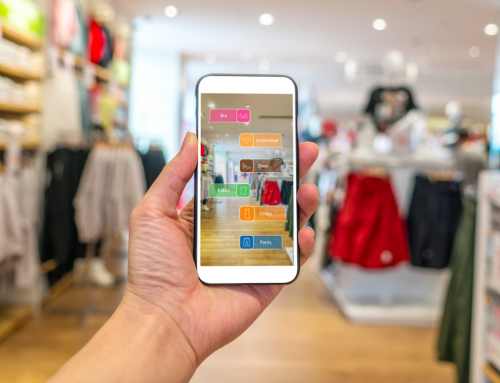eHarmony.com offers an online dating service that connects males and females in the hopes of creating loving relationships. It has patented formulas to best match mates, and targets those mostly in the age segments 21-55+. Currently, eHarmony’s television commercials express the happiness that people get from meeting their scientifically matched mates. In this regard, the service is essentially portrayed as an optional choice for some people to find happiness. This is a hypothetical case study on using research analytics to assess consumer behavior and find “what the customer wants”.
The following case study is an in-depth case study on this blog for only the interest of our readers. Important notes:
- This training report does NOT reflect the typical report composition of an SIS International’s report. It was never and never will be submitted to any client nor used for commercial purposes. No representations are made to its quality, factuality or timeliness.
- SIS never discloses client names or contents of reports, and has adhered to strict ethics since its founding 25 years ago.
- The article does not contain advice for decision making.You agree to full terms of SIS’ privacy policy & terms of usage detailed on this website.
Advertising Medium – Television
To attract more of the younger segment of singles aged 21 – 35, eHarmony.com could consider employing an attitude-changing campaign in which television ads stress scarcity and difficulty in finding one’s fairy tale mate. This campaign may change attitudes among 21 – 35 year-olds that online social dating is not for those who “give up” on traditional dating, but those who want to stop wasting their time looking in the wrong places.
The advertisement would have to bepositive, upbeat feelings when the actor uses eHarmony to get serious about his or her dating, but would also convey scarcity and a call-to-action. This “aspirational” form of advertising could possibly cause “receivers” to evaluate their own dating experiences and strike a chord with those who are sitting home without a date for the weekend.
These advertisements would target both males and females to achieve a balanced number of sign-ups. Specifically, eHarmony’s campaign could target MTV, Lifetime, VH1, ESPN and also after key network shows like ABC’s Lost, which is geared towards this age segment. Because several of these channels are gender-specific, there could be two versions of the commercial, with either a female source or male source.
Television is a strong medium to change attitudes for this young segment because it targets those individuals who are sitting at home on their couch. There is a possibility that because they are at home watching television, they may feel lonely. When “primed” with this commercial and a call-to-action, they may be persuaded to join this service to alleviate their anxiety, loneliness or feelings that they are wasting their time. Second, young people are major watchers of television; this is affirmed in general by the sheer amount of ads geared towards this age range.
Third, television would allow eHarmony to achieve its particular marketing objectives. eHarmony brands itself to consumers as the premier and most scientific online dating service. Its sleek and upbeat television ads convey a professional message unlike other seedy online advertising for online dating. This helps to differentiate it from other brands and add value to its brand, which helps to attract the right candidates for its service. Other unconventional forms of advertising like M-commerce could even be detrimental towards this strategically “exclusive” brand given the newness of the medium and consumers’ perceptions about this service category.
Fourth, television advertising on target channels could allow for actors to act out through body language the exact message, rather than by conveying it merely through text copy or images in magazine or online advertising. In this respect, the message of scarcity of mates, the consensus among actors in the ad, and the positive emotional and behavioral reactions to the love found on eHarmony can be depicted visually and indirectly to viewers.
Potential Ad Source
Two characteristics could be considered in choosing the source of the advertisement. First, the communicator would have to be credible. By this, eHarmony would have a younger member of the same age segment, which would build credibility by virtue of his or her age. The actor will figuratively be speaking receivers’ language.
Also, the commercials would maintain at the end of them the comments of the founder, who himself has a Phd degree. This would also contain authoritative persuasive effects and positive associations, which might help to limit knowledge bias. To prevent reporting bias, eHarmony could contract out with two actors so that they do not endorse other products which could compromise the message.
Secondly, in the two versions of the ad with either a male or female source, the communicator may also be physically attractive. This is because, according to the Halo effect, the receiver will relate the service with feelings towards the attractive source. Importantly, this attractiveness is highly relevant to the service given that online dating is largely about physical and emotional attraction. Hence this attractive source would help quickly build trust in the service given the relevance of attraction to the service offering. This source would also help receivers to envisage the quality of subscribers and what kind of mate people can find on eHarmony. Ultimately, this attractive source in each ad could help in ensuring receivers process the message and change their potentially reluctant attitudes on online dating.
Elaboration Likelihood Model
One message that could work with the central route is a source giving a message to receivers about the scarcity of one’s mate and how receivers are wasting their time with traditional dating practices. Essentially, the message warns about wasting time with traditional dating and watching television alone, missing out on life. The receiver would then proceed with high involvement processes eliciting cognitive responses that either agree or disagree with the message. Thus a receiver might think about a recent bad dating experience and agree. The receiver who agrees with the message will likely comply with the ad’s message, resulting in belief and attitude change followed by a behavior change. They might try the free personality prerequisite test and begin their subscriptions to the service. On the other hand, a receiver might strongly disagree with the message given their own positive experiences in the past, and they may provide cogent reasoning as to why the message is wrong.
In contrast, a message following the peripheral route concerns the attractiveness of the source or the visual depiction of finding an attractive mate quickly. In this respect, the message would require low-involvement processing and receivers would grasp that they could find an attractive mate on this site through a professional matchmaking method. This would cause belief change about online dating services and in particular eHarmony.com. This could cause a change in behavior by getting the receiver to sign up and cause others to sign up through word-of-mouth buzz. Once this happens the receiver may change his or her opinion on this type of service and specifically build positive perceptions about eHarmony.com.





